Review: Samsung Galaxy A6 for Sprint
Oct 19, 2018, 3:57 PM by Eric M. Zeman
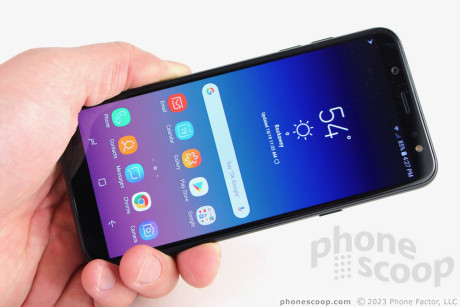
The Galaxy A6 from Samsung finds a good spot in the middle of Sprint's lineup. This affordable Android phone features a metal chassis, a pair of capable 16-megapixel cameras, and Samsung's Infinity Display. It looks and acts like a flagship at half the cost. Here is Phone Scoop's in-depth review.
Hardware
Is It Your Type?
The Samsung Galaxy A6 delivers high-end looks at a mid-range price. It you want a phone that looks good, feels good, and includes many of today's latest features, the affordably-priced A6 is worth a gander.
Body
Just a couple of years ago, phones with aluminum chassis were all the rage. While many manufacturers now favor lots of glass to boost visual appeal, there's still something attractive about phones that are mostly metal.
The Galaxy A6 from Samsung is formed by an aluminum unibody. The metal spans the entire rear surface and wraps around to form the side edges. It reminds me of some HTC designs. It's a good look.
The A6 is all black. The glass is black, the metal chassis is matte black, and the antenna lines on the rear surface are black. One might say this phone is black metal. The front face is rather generic looking, but the rear is more distinctive.
The 5.6-inch screen helps keep the size in check. I wouldn't call it compact, but it's not a monstrous device by any stretch. The A6 is 2.79 inches wide. This relatively narrow width makes the phone easier to manage in a single hand. I appreciate the 7.7mm thickness. It feels solid and weighty, and yet I wouldn't call it overly heavy. I believe many people would find the A6 pleasant to use day in and day out. It drops into tight pockets easily.
I'm not worried about the A6's durability. The phone isn't ruggedized, but the metal chassis goes a long way to improving the phone's odds of surviving drops. The materials all feel good and come across as strong. All the parts are assembled tightly with no unsightly seams or gaps. The phone is not water resistant, so be careful around the pool.
The A6 has Samsung's "Infinity Display" but it's not quite the same as the Galaxy S series' glass. In this case, the phone's display is flat (rather than curved) and tall with a tall 2:1 ratio. Most of the face is screen, but you'll still see some bezel all around. The user-facing camera and flash stand out plainly.
On the left edge you'll find the volume controls and SIM tray. I like that Samsung separated the volume controls into two buttons. They have great travel and feedback. The SIM card tray accommodates both a nano SIM card and a microSD memory card. You'll need a tool to eject it.
Ports
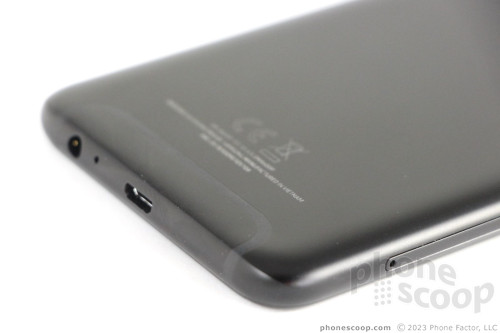
The screen lock button is on the right edge. It has a good profile and pleasing action. A small hole cut into the side edge, fairly near to the top, is the speakerphone.
A microUSB port is on the bottom (no USB-C?!), as is a 3.5mm headphone jack. I'm happy about the jack, but bummed about the microUSB. There are no design elements on the top edge of the phone.
The rear panel is distinctive. It's mostly flat aluminum, but the antenna lines have a neat pattern to them. Moreover, the camera lens and fingerprint reader are bundled together in an unusual-looking module. In other words, it's not super boring. Samsung's logo is stamped into the metal and has a shiny finish that often catches the light.
Camera Module
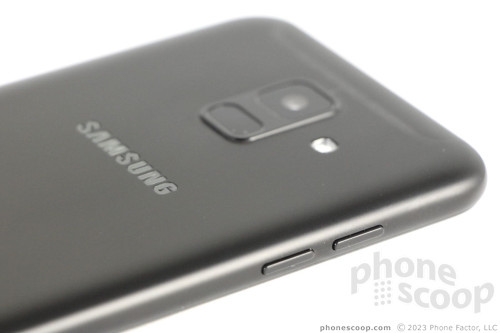
No, you cannot access the battery.
The Samsung Galaxy A6 holds its own against devices in the same price range. It's a classy metal slate that anyone should be proud to carry around.
Screen
The display measures 5.6 inches across the diagonal with 1,480 by 720 pixels, making it HD+ at a ~2:1 ratio. Samsung calls this an Infinity Display, but it doesn't deliver the pop of the impressive panels on the S9 or Note9. The resolution is just barely good enough for me. There's a slight lack of focus along the borders of app icons and text.
It's a Samsung AMOLED panel, and that means the colors are pushed a bit. You'll see redder reds and bluer blues, for example. It's plenty bright. The screen cranks out some serious light, ensuring you can see the screen under most lighting conditions. Viewing angles are very good.
The screen has the usual set of controls for managing the blue light at night, color profiles, and so on.
Signal
AT&T and Sprint sell the Galaxy A6. We evaluated the Sprint model. The Sprint variant supports the carrier's unique 3G and LTE 4G network bands.
In general I was pleased with the phone's ability to connect to the network. All calls I made patched through without issue, and the phone didn't drop any while I tested it. Data speeds are mediocre, likely due in part to the Cat 6 LTE modem inside. I was never blown away with what I saw. The phone was able to stream standard-definition audio and video, but it still buffered a little bit. Browsing through social networks was choppy at times.
The A6 gets the job done, and should be fine for a mid-range phone.
Sound
The A6 is an average voice phone. Call volume fell short in noisier places like coffee shops. Quality was up and down. I noticed some minor distortion from time to time, and voices often sounded muffled. People I spoke to through the A6 said I sounded “quiet.”
That side speaker? It does all right. Speakerphone calls via that little side notch sound good enough for your home or office. It's not quite strong enough to properly handle a call in a moving car or outside on a windy day.
I'd rate the ringers and vibrate alert as sufficient.
Battery
Samsung gave the Galaxy A6 a 3,000mAh Lithium-polymer battery. It's sealed in the chassis. There's no wireless charging, nor is there any effective rapid charging. It takes close to two hours to charge the A6 up from 20%, which is annoyingly long.
Once it's charged, the phone pushes through a full day and just a little bit more. You can unplug at breakfast and still have enough charge left to get you to work the following morning. The A6 followed this pattern without fail. The only activity that really drains the battery in a hurry is GPS-based navigation.
The phone has Samsung's power management tools aboard, which means it will learn your usage patterns over time and attempt to maximize battery life. You can run the phone in “normal” mode, or with the power saver set to “mid” or “max.” Each dials back performance a bit to in order to conserve power.
Bluetooth, GPS, NFC, WiFi
I didn't run into any issues with the A6's secondary radios. The phone's Bluetooth did well. I was able to pair it with headphones and speakers, as well as my car and PCs. The pairing / connecting process typically took care of itself, and connections maintained. Call quality through my car was pretty rough.
The GPS radio worked well for navigation from A to B. It kept up with real-time, voice-guided directions, which is all I want from a phone these days. Google Maps is as powerful an app as ever.
The A6 supports Samsung Pay, thanks in part to the NFC radio. I was able to set up Samsung Pay and successfully make mobile payments with the A6. I was not, however, able to use the NFC radio for pairing with compatible Bluetooth accessories.
The WiFi did really well; no issues there.
Software
Lock Screen
The lock screen is a decent space. The A6 offers Samsung's version of the Always On display concept. The clock, date, battery percentage, and notifications are always visible. Notifications can range from simple badges to the full text of incoming messages. Samsung offers plenty of ways to tweak the Always On display, including different clock styles and swipeable widgets.
Pressing the screen lock button on the right brings up your wallpaper, full notifications, access to the Quick Settings menu, and lock screen shortcuts. Only two shortcuts are available on the lock screen and you can configure which they are.
As far as security is concerned, the rear-mounted fingerprint reader is your best bet. It's the quickest and most consistent. The reader requires you to swipe your finger down the reader to register prints, which works much faster during initial setup than pressing and lifting and pressing and lifting that most other phones make you do. Once your print is set you can just tap the reader. If you use the fingerprint reader as your primary method for unlocking the phone, you'll find it is fast and accurate.
The A6 has a basic facial recognition tool, but it's not anywhere near the same thing as Samsung's Intelligent Scan on the company's high-end phones. It's just a basic tool; it's not that fast and it's not terribly secure. Stick with the fingerprint reader.
Home Screens
The A6 has the same basic experience as Samsung's Galaxy S series phones. The Galaxy A6 ships with Android 8 Oreo and “Samsung Experience 9.0.” It offers a respectable set of tools for tweaking the software experience.
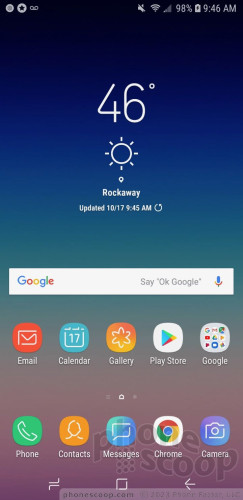
There's no app drawer button out of the box. Instead, swipe the home screen up or down and the app drawer will appear. Samsung's solution is elegant, though you can add the app drawer button back if you want.
The app drawer itself can be arranged however you wish; it's alphabetical by default. Samsung allows you to hide unwanted apps, which is something I appreciate on this bloatware-filled phone.
The Quick Settings panel has a clean design that I like. The main settings menu also uses clean colors and a bright background. Samsung has added tons of options for controlling the phone's behavior above and beyond standard Android.
For example: themes. Only one is pre-installed, but you can download more. Themes change your entire visual experience, from the wallpapers to the icons to the fonts and colors.
You can spend forever tweaking small things, such as the number of apps that appear on home screen panels, how big the fonts are, and which fonts appear.
The A6 includes an Easy Mode, which is meant for people who may be new to smartphones, or for those who have bad eyesight.
And of course there's Bixby, Samsung's intelligent assistant. Samsung didn't hardwire a button to Bixby as it did with the S9 and Note9, but it's lurking there as the left-most home screen panel. You'll get the best results if you create a Samsung account and give it all sorts of permissions.
The Galaxy A6 ships with a 1.6 GHz octa-core Exynos processor from Samsung with 3 GB of RAM and 32 GB of storage. It's a fine CPU for this mid-range phone. I didn't encounter any performance issues while I used the device.
Camera
To launch the camera app, it's fastest to double-press the screen lock button. The camera snaps open in a blink.
You swipe back and forth to access the various shooting modes. Swipe up and down to switch to the selfie camera. The camera has separate picture and video buttons, which makes it easy to snap photos when shooting video.
The A6 camera modes include auto, pro, panorama, continuous shot, HDR, night, sports, and sound & shot. You can edit the order of these, if you wish, and even add a shortcut to your favorite shooting mode to the home screen.
The pro mode is very limited. It lets you tweak exposure, ISO, and white balance. That's it; no control over the shutter speed for long exposures. Bummer.
There's no portrait mode with the main camara, which seems like a huge omission these days.
Three modes are available in the selfie camera. The first is selfie focus and is basically for portrait-style shots where you are in focus and the background is blurred. You need to hold the phone at arm's length to get this to work well. There's also a user-facing AR Emoji mode so you can apply stickers to yourself.
Last, the camera includes Bixby Vision for both the main and selfie shooters. There's a huge impediment here: Bixby Vision requires you to sign-in to your Samsung account, or create one if you haven't already. That's just all sorts of lame. If you care to do that, Bixby Vision can read/translate text in real time, read QR/barcodes, and help you shop with location-based suggestions. I don't recall the sign-in action being a necessity on other Samsung phones.
The camera app functions well enough. I didn't notice any slow-downs or other issues.
Photos/Video
The Galaxy A6 takes shockingly good photos. I have to admit, I don't have the highest expectations from today's mid-range phones. I don't expect them to be bad, but the A6 surprised me.
The lone 16-megapixel camera on the rear has a aperture of f/1.7, which really helps with low-light shots. The A6 delivers crisp, colorful images that are properly exposed and have spot-on white balance. The pictures I captured on a sunny day look fantastic. Everything about them is right. I have no complaints whatsoever.
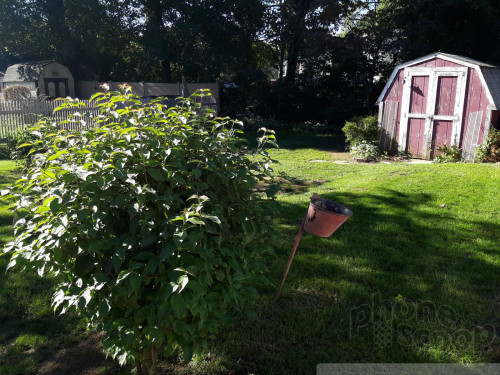
The selfie camera also has a 16-megapixel sensor with an aperture of f/1.9. That's very good for a selfie cam, as many typically offer apertures between 2.0 - 2.4. This means the selfie camera is really good in low-light, without the flash. The selfie camera produces very good selfies. They are generally sharp, bright, and colorful. I did notice some odd behavior from the portrait mode, but that's not uncommon for a single-lens bokeh feature.
The phone can capture full HD video from either camera. The footage I took looked very good. I was pleased with exposure, color, and focus. Most everything looked really good. You'd hardly believe this is a mid-range phone.
Wrap-Up
Samsung has done a commendable job with the Galaxy A6, a formidable phone in the sub-$400 space.
The A6 gives you a metal chassis and a good-sized screen in a phone that's not too big and not too small. The quality of the hardware is excellent. If there's one area the A6 could improve, it's call quality and data speeds. These weren't terrible, mind you, only average. Battery life is on target and many will appreciate the memory card slot and headphone jack.
Samsung's user interface is a bit in-your-face, but it is powerful. The UI includes lots of options that stock Android doesn't. It ran quickly thanks to Samsung's Exynos chip. The camera app is fun, but lacks killer features like portrait mode. Good thing, then, that the A6 captures fantastic pictures at this price point.
Samsung sells the Galaxy A6 for $360 via its own web site. Sprint is charging closer to $385 if you want to buy the phone outright, or about $16 per month for an 18-month lease. That $16 monthly fee is a lot more attractive than the $36 or $46 you might spend on pricier phones. That's why I think the Galaxy A6 makes for a great teen phone, or something for someone who doesn't want all the bells and whistles. This is a really solid phone for the money, and it competes well with similar offerings from Motorola and others.
Camera Module

Comments
No messages


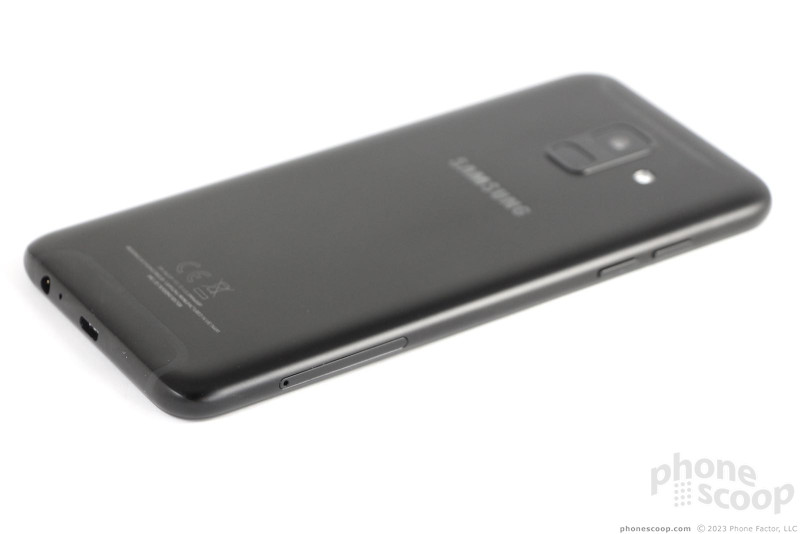



















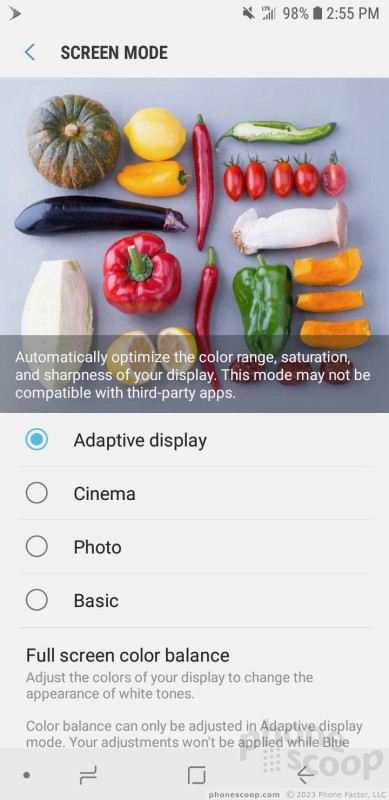







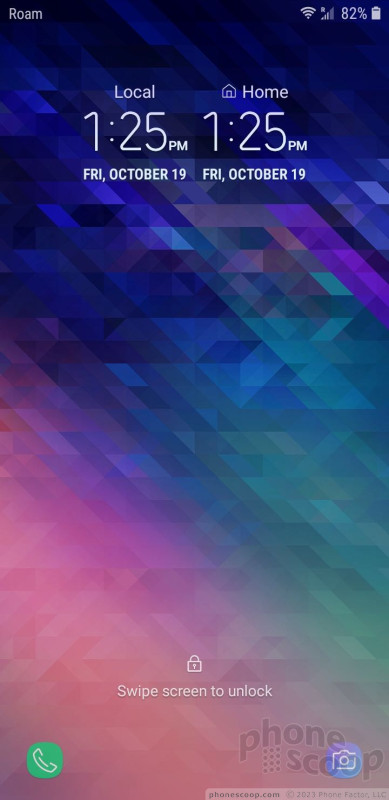





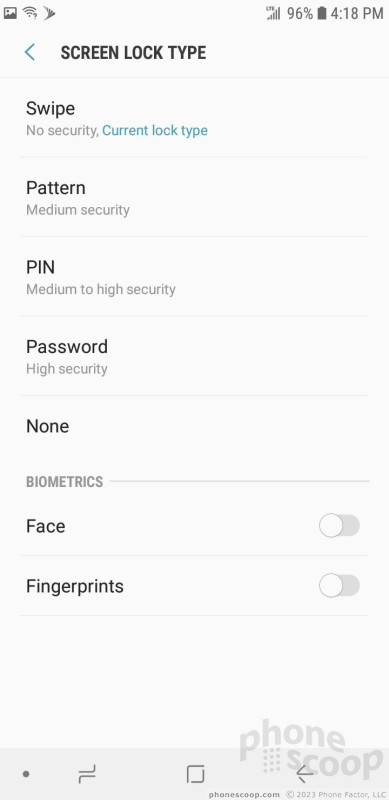





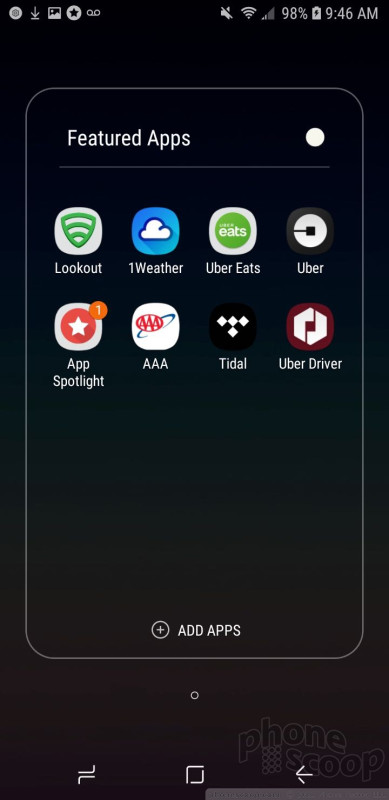







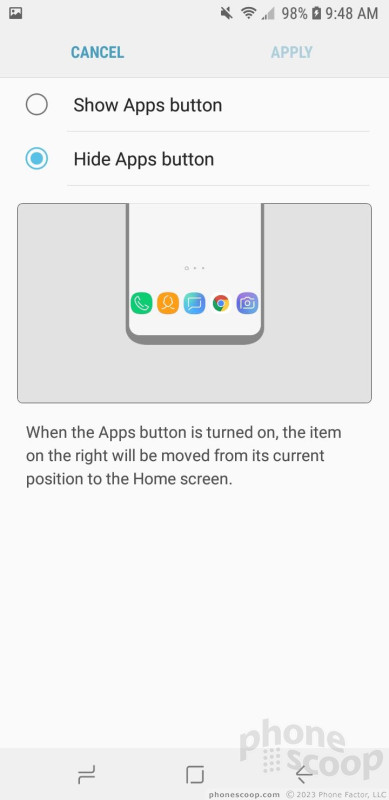





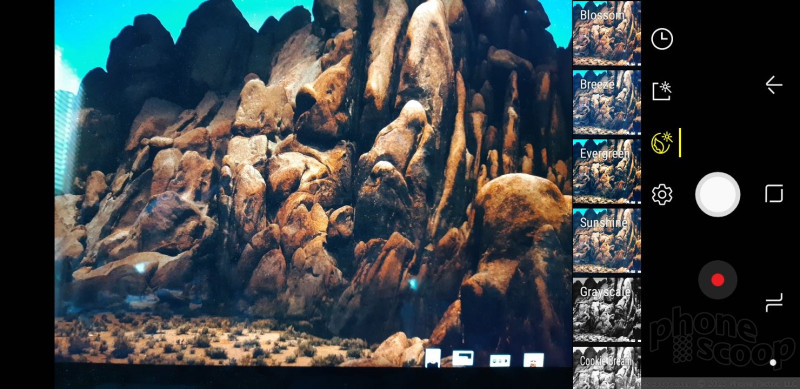
















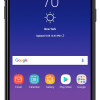 Samsung Brings Galaxy A6 to the US for $360
Samsung Brings Galaxy A6 to the US for $360
 iPhone 15 Series Goes All-In on USB-C and Dynamic Island
iPhone 15 Series Goes All-In on USB-C and Dynamic Island
 Samsung S24 Series Adds More AI, Updates the Hardware
Samsung S24 Series Adds More AI, Updates the Hardware
 Samsung Puts its Best Camera Yet in the Galaxy S23 Ultra
Samsung Puts its Best Camera Yet in the Galaxy S23 Ultra
 Samsung Galaxy A6
Samsung Galaxy A6










